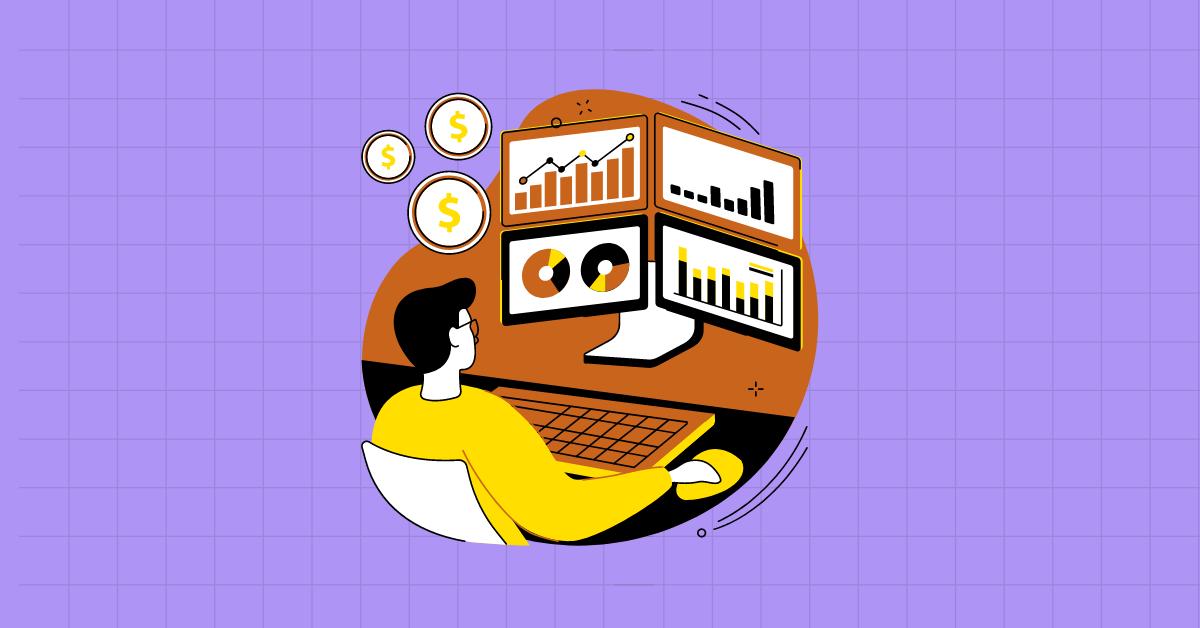
“Money is just something you need in case you do not die tomorrow. Let this be a reminder for you not to obsess over profits and losses.” ― Yvan Byeajee
But whenever money is involved, it often stirs up a wide range of emotions in people.
While investors like to think that their decisions are 100% rational, in reality, our emotions have a great impact on how we behave.
The desire for more, anxiety, the fear of missing out, unease, concern, self-assurance, and restlessness are just a few of the numerous emotional states that traders often experience.
All of these emotional swings are part of the psychology of trading, where emotions can drive market movements as much as actual data. The key to navigating these turbulent waters is developing emotional intelligence.
Introduced by researchers Peter Salavoy and John Mayer, and later popularized by Daniel Goleman in 1996, emotional intelligence (EI) is one of the biggest predictors of success in managing interpersonal relationships, fostering self-awareness, social awareness, and empathy.
Quite simply, emotional intelligence is the capacity to recognise, understand, and manage our own emotions and the emotions of others. In trading, this translates to the ability to stay calm under pressure, make rational decisions, and maintain focus despite the highs and lows of the market.
Viewing your trading process through the lens of emotional intelligence can be incredibly insightful:
If you want to strengthen your emotional intelligence, trading courses and financial education from Adhitan offer invaluable tools and insights.
Cognitive bias is the umbrella term for different forms of thinking errors that occur as we receive and analyse information. In other words, these errors are mental shortcuts that let us make quick judgements and understand our surroundings. We must rely on mental shortcuts to respond fast as we are inundated with information.
When losing money, the anchoring effect can trick us into holding onto losing trades. After spending hours researching an idea and waiting for the perfect entry point, it’s easy to focus too much on the initial effort rather than the actual losses when a trade goes against us. The key is to keep looking at the facts to remain objective and be ready to cut losses early to preserve your wealth.
Most individuals are prone to information bias when they tend to evaluate facts that don’t contribute to solving a problem or making a judgment. Filtering away the noise and prioritising the information that really counts is one of the challenges of investing.
The strong inclination to avoid losses above earning profits is known as loss aversion. A closely related phenomenon is the endowment effect, where people place a higher value on items they own than identical items they don’t. Since investors may hang onto lost assets, trying to recoup their losses rather than reallocating funds, these presumptions may result in harmful investing decisions.
Hindsight bias results from previous events being more predictable than they really were, which causes one to believe one “knew it all along” after the fact. Very often, this bias can skew our perception, making it seem like stock market crashes such as the dot-com bust or the 2008 financial crisis were foreseeable, even when they weren’t.
So, how do you handle the whirlwind of emotions that accompany every trade? Can you navigate the mental minefield that trading often becomes? Here are some strategies to help you stay composed and rational, even when the market seems like a tempest:
Take a moment to reflect on your emotions and why you are experiencing them. By gaining a deeper understanding of your reactions, you can make more informed decisions instead of being solely driven by emotions.
Decide in advance how many trades you’ll make before taking a significant break. Most mistakes occur when trades follow one another too quickly. After reaching your limit, take a long break to review your strategy and consult your trading journal.
Evaluating and contrasting your previous decisions with your current choices can provide valuable insights for future responses. So, it is important to assess and reassess your performance as you progress consistently.
Trading moves fast, but don’t let the pace sweep you away. After each trade, take a moment to think about something else before returning to your strategy. This pause helps you regain perspective.
Above all else, keep in mind that every single one of us has the inherent ability to improve our trading strategy but also our emotional intelligence levels. Adhitan’s trading courses and financial education platforms are your gateway to mastering emotional intelligence in the trading world. If the trader puts in a little work, they may greatly improve their results.
The guest posts featured on Coinpedia are contributed by external authors and reflect their personal opinions and viewpoints. Coinpedia does not endorse, verify, or take responsibility for the accuracy, legality, or reliability of the content, advice, or opinions expressed in these guest posts. Including guest posts does not imply Coinpedia's approval of the content or the author’s views. Readers are encouraged to independently evaluate the information and seek professional advice if necessary before acting on any information provided in the guest posts.
The crypto market opened 2026 with a strong bullish push, lifting Solana (SOL) above $143.…
Shiba Inu news has taken a familiar turn this week. SHIB’s recent 4.5% wobble wasn’t…
Chainlink has continued to be one of the prominent names within the cryptocurrency space, with…
Investors seeking the best crypto to buy now are moving beyond Shiba Inu (SHIB), whose…
Story Highlights The live price of Filecoin crypto is Price predictions for 2026 range from…
Vitalik Buterin just gave Bitcoin maximalists something they rarely get from the Ethereum camp: credit.…